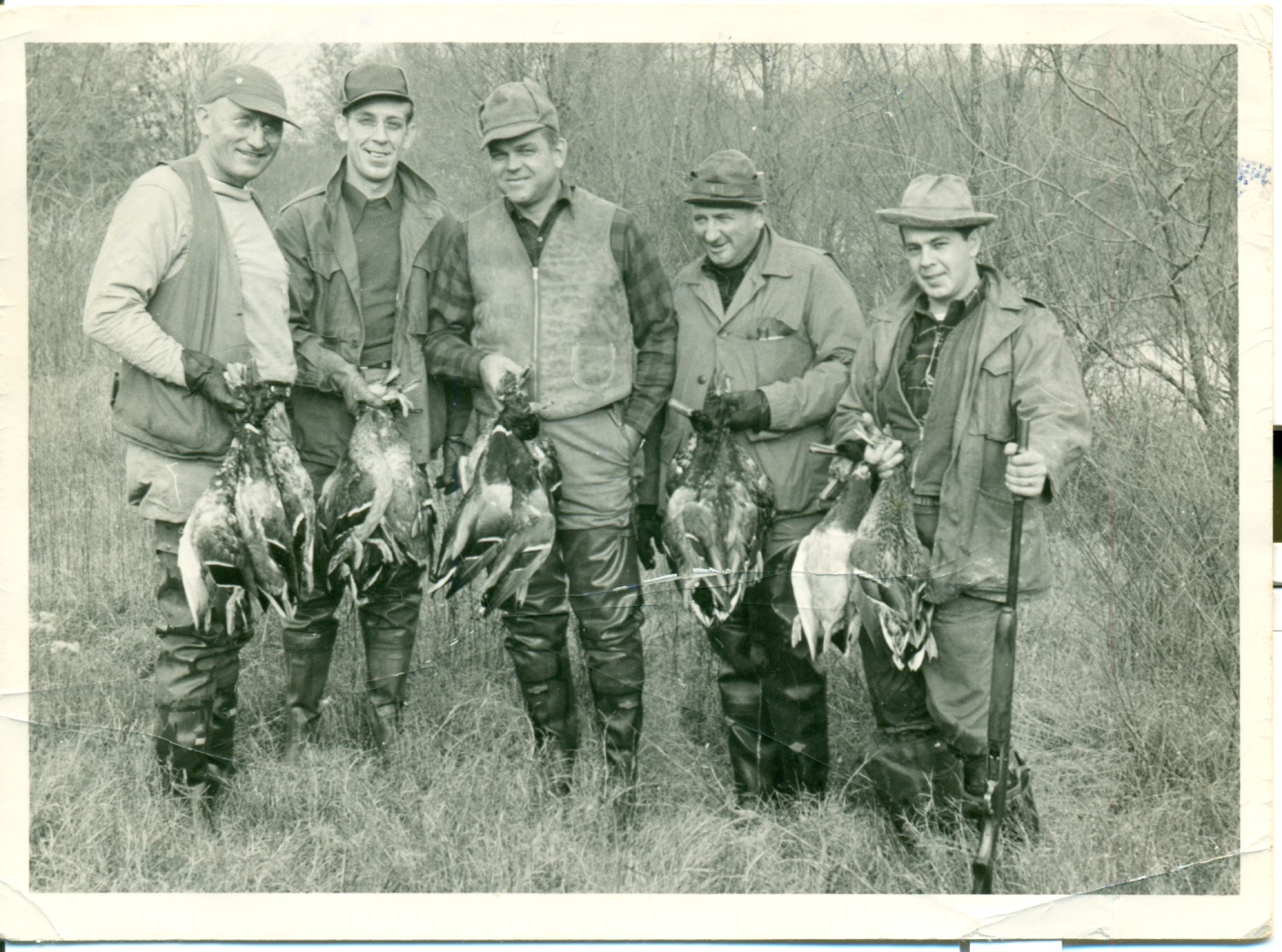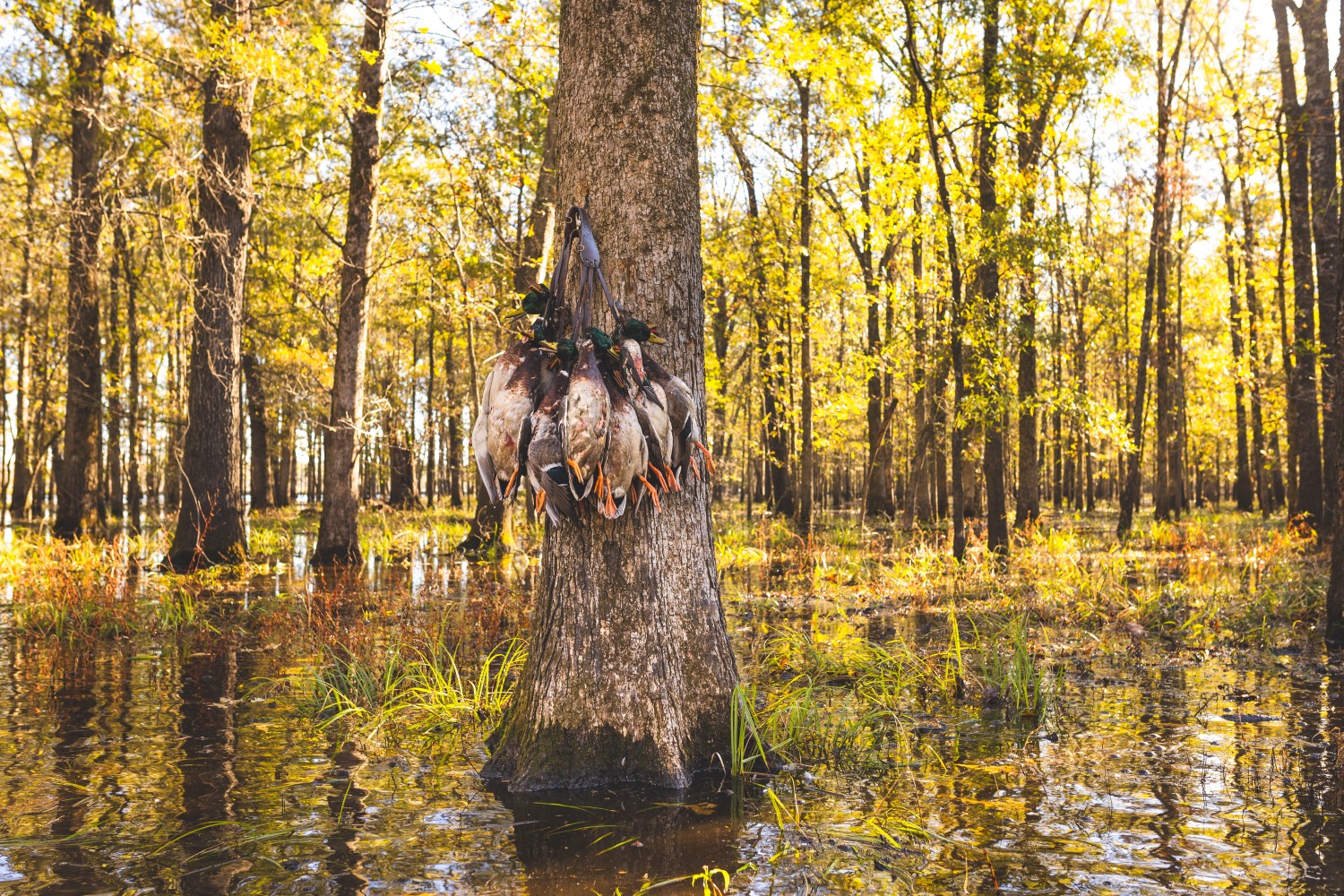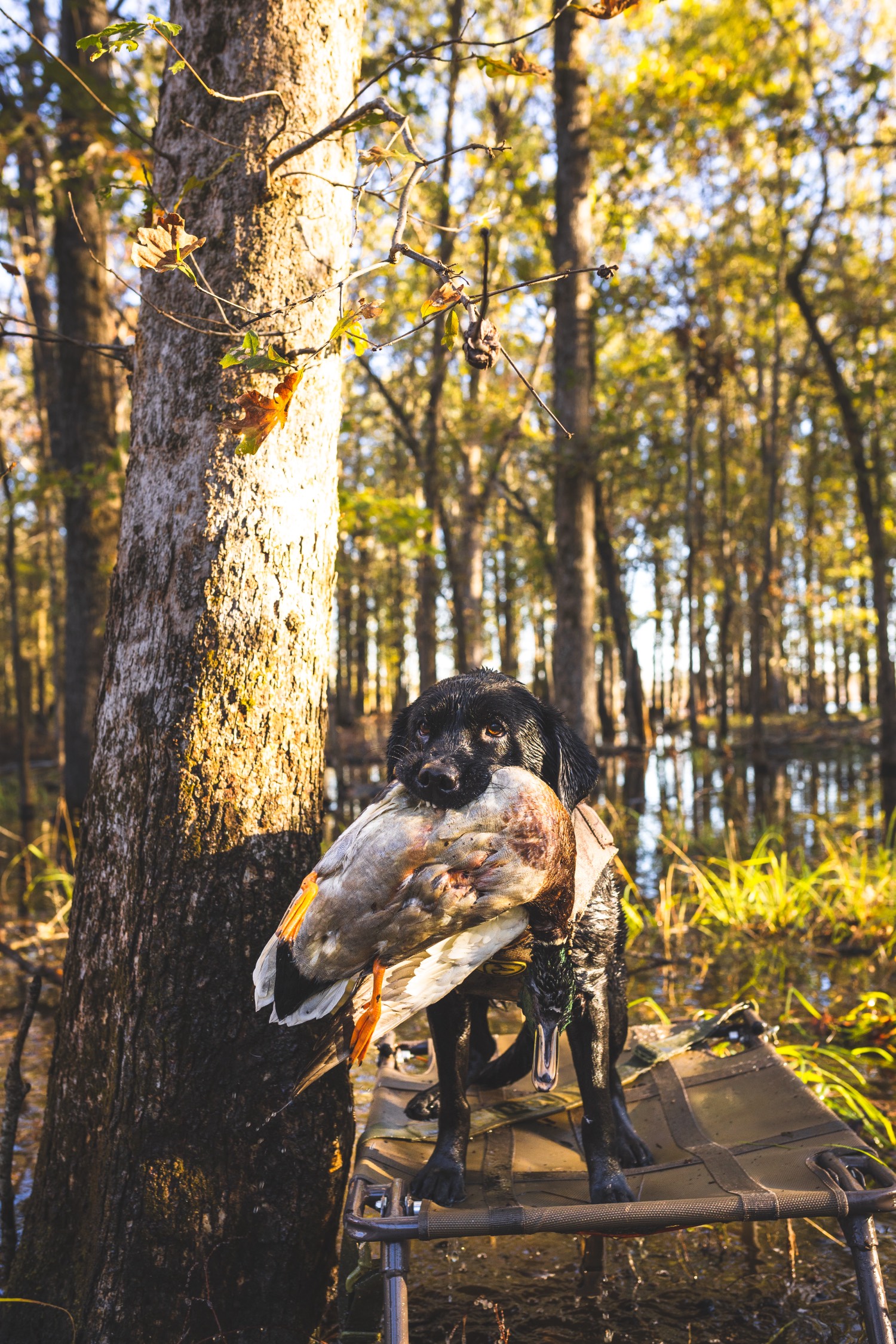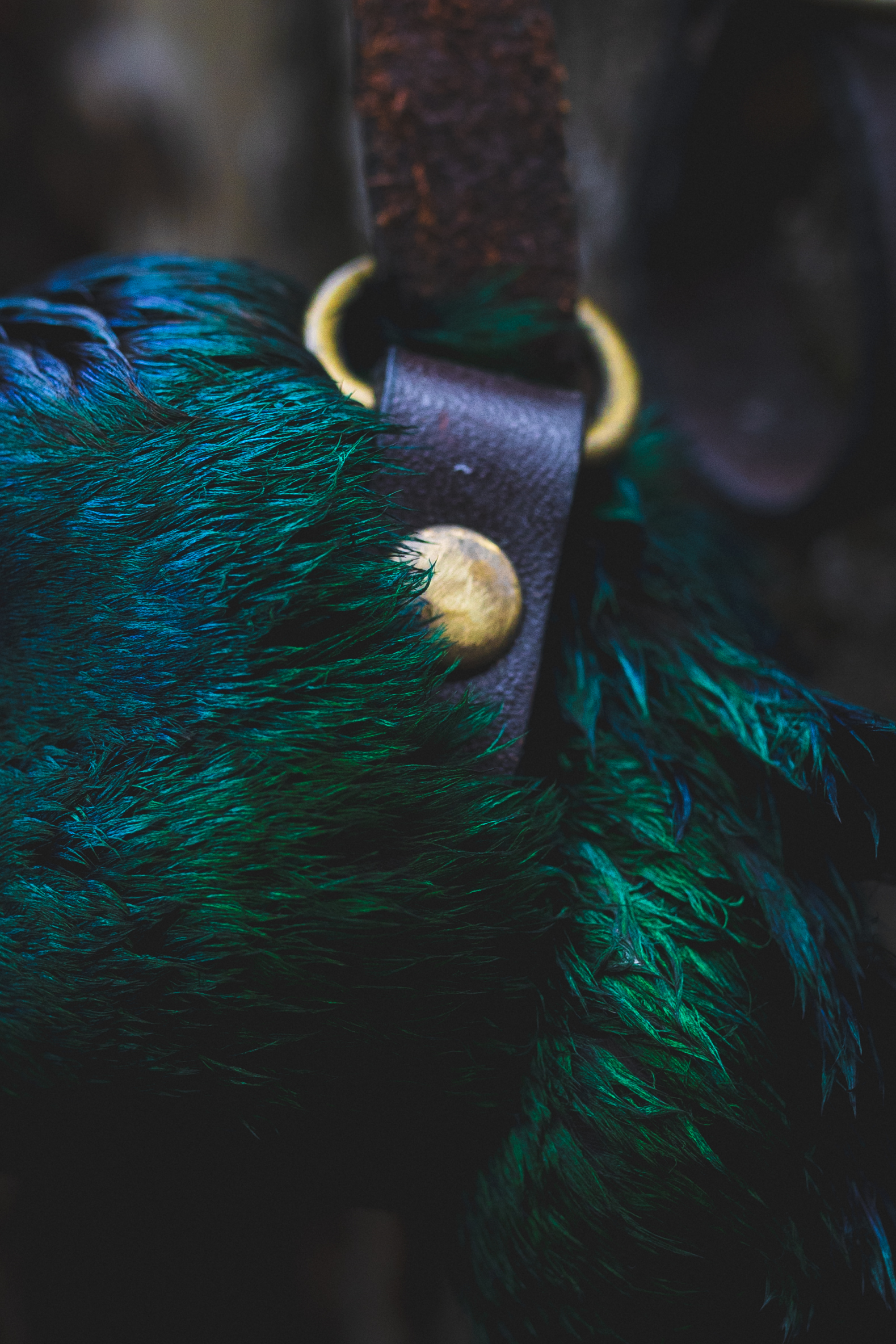Written by Brent Birch

Arkansas’s duck hunting popularity rose in the 1940s creating a need for more publicly accessible hunting opportunities for native Arkansans as well as visitors hoping to get a shot at a mallard in the flooded timber.
Arkansas, branded the Duck Capital of the World, is known far and wide for flooded timber duck hunting. Expansive acreage of bottomland hardwood forests provide unrivaled habitat for migrating waterfowl in terms of refuge as well as food. Towering red oaks, such as the nuttall and willow oaks, are a big source of energy for ducks as well as the invertebrates and such that grow within the leaf matter on the forest floor.
As news of Arkansas’s duck hunting reputation spread in the 1930s and 1940s, more and more of the wealthy sportsmen in the country began traveling to the state, typically by rail, to experience the thrill of mallards maple leafing down through limbs and leaves. Many started using a local guide to gain access to high production hunting grounds but that soon transitioned to purchases of these coveted properties.
Those enamored with waterfowling but light in the pocketbook soon began to run out of options as the rich and powerful began gobbling up many of the prime hunting spots around the Stuttgart, Arkansas area. As opportunities dwindled, the Arkansas Game & Fish Commission, the state agency that oversees wildlife in the state, began the process of acquiring land to provide more hunting opportunities for the public.
The crown jewel of the nearly 50 publicly accessible green tree reservoir hunting area is the famed George H. Dunklin, Jr. Bayou Meto Wildlife Management Area (WMA) south of Stuttgart. Dunklin is a lifelong resident and owner of thousands of acres of agricultural and bottomland forest in the Grand Prairie region of Arkansas. A staunch conservationist, Dunklin is a former President of Ducks Unlimited and a champion for ducks in the region.
Bayou Meto WMA is open to Arkansas residents the full 60 day duck season but out of state residents have set windows as to when they are allowed to hunt the “shooting grounds”. Guiding is not allowed on Arkansas public hunting areas but it once was. Bayou Meto WMA also has unique rules regarding access, how many shells you can carry and no spinning wing decoys allowed. Be sure to check www.agfc.com for more information before planning a trip there.

Pictured: Success on a recent trip to Stuttgart by the Mossy Oak crew.
The following is an excerpt from The Grand Prairie: A History of Duck Hunting’s Hallowed Ground detailing the acquisition and history of Bayou Meto. The 350 page book details the rich traditions of the area in and around Stuttgart, Arkansas and a must read for anyone interested in duck hunting or Arkansas history. The book can be found at www.arkansasgrandprairie.com.
Bayou Meto was the first WMA purchased and managed by the Arkansas Game and Fish Commission and became the blueprint for all such areas to follow. It is also arguably the most historically and culturally significant, residing as it does smack in the middle of prime duck hunting territory.
“We are about fifteen years late in getting started,” wrote Holder about the time AGFC was purchasing the land that would become Bayou Meto WMA, “but not too late to take advantage of several outstanding areas that are still available.”
Only in the duck vernacular would Bayou Meto land be described “outstanding.” The very federal land act that transferred the parcel to Arkansas as part of a total of 7.6 million acres—the Swamp Lands Act of 1849 and 1850—tells you all you need to know about how hospitable a place it was.
But everything that made Bayou Meto difficult for civilization made it all the more ideal for ducks. In February 1948, a committee of the Arkansas Wildlife Federation and Ducks Unlimited presented the idea to the AGFC for “establishing wildlife management areas, with particular emphasis on two large tracts of land south of Stuttgart; one in Bayou Meto, embracing approximately 7,000 acres; and the other on Grand Cypress, lying partly in Jefferson County.”
The project got the go-ahead that fall, and the first parcel of Bayou Meto was bought for around seven dollars per acre. The following summer, Wrape Plantation was added to the overall WMA. Today, at just under 34,000 acres, it is one of the largest WMAs in the nation.
From the start, Bayou Meto provided Mother Nature and the ducks a helping hand when it came to moving water in a timely and consistent manner of controlled flooding. The area is too large to flood artificially, but rainfall and runoff are maximized through a system of creeks, sloughs, ditches, backwaters, and drainages.
Some thirty miles of levees, one dam, thirteen stop-log structures, seventy-seven gated pipes, seventy-three ungated pipes, four re-lift pumps, and two high-water rock spillways, along with a smattering of beaver dams, are used for water manipulation.
In these constructs, both natural and man-made, water is diverted, slowed, redirected, and channeled for wildlife habitat.
But it’s not the technology or the design that enthrall Arkansans and make them so fiercely proud and protective of Bayou Meto, it’s the role the area has played in the lives of generations of duck hunters. You don’t have to go very long talking about it before the passion for the place comes to the surface among the Grand Prairie’s outdoorsmen and women. Practically every one of whom considers Bayou Meto home.
“I’ve been hunting there since 1959,” said George Cochran, former professional fisherman who still owns a place in the area. “There’s not a management area for duck hunting that I haven’t been to. But Bayou Meto is the biggest and what should be called the crown jewel of Arkansas as far as for a public hunter.”

Cochran’s father, North Little Rock businessman Ed Cochran, didn’t share his son’s passion for the outdoors, but a neighbor, Pete Jaworski, did. Under his guidance, the younger Cochran would discover the wonder of the place for the first time.
“I'll never forget it; the first day I went I was nine years old,” said Cochran, sixty-six, who keeps a photo of his mentor in his study to this day. “It was a wilderness then, and when we got there we parked in a familiar area. It’s called Long Bell Turn Around, and you just walked in. This was on a Saturday, first time I ever went, and there’d be like two or three cars there.
“It started getting daylight, and [Jaworski] said, ‘Keep your head down. Ain’t no use me calling them in until it’s shooting hours.’ I was peeking out my hat, and there was just thousands of them coming over the trees. I’m from up here in North Little Rock, and we had a lake and it had maybe fifty ducks on it. Ever since that day I was hooked.”
Monroe Williams, seventy-three, has spent a lifetime hunting and guiding in these parts. After cutting his teeth at the age of fourteen for Little Rock orthopedist Dr. Joe Sheffield’s club south of Lonoke, Williams has spent the last fifty years living on the Grand Prairie, where he owned and operated Black Duck Lodge and guided groups hunting the WMA.
Williams recalls how advertisements in a sportsman’s magazine reaped him nationwide response and his natural people skills earned him repeat business for years.
“I put an ad in, I believe it was Field and Stream magazine,” he said. “They had them little tiny ads in the back, you know, about that big, that cost like a hundred dollars. I just almost cried when I had to spend a hundred dollars to do that, but it paid off tenfold for sure.”
As Bayou Meto’s reputation grew, Black Duck Lodge grew with it, from six or eight hunters a day to nearly forty with multiple guides, including local legends Lester Capps, Orville Midgett, Red Smith, Steve Choates, and others. As time went along, Williams began to discover just how small the duck hunters’ world was.
“We’ve had a lot of fun down there, met a lot of nice, good people. Made a lot of good friends,” he said. “People tell me they run into people at the airport that have been here and hunted. One guy said, ‘Well, I hunted with an old man down there. I can’t think of his name, but he wore overalls all the time.’ They said, ‘You talking about Monroe Williams?’ They said, ‘Yeah, that’s exactly who it was.’”
By the 1990s, the fame of the place was starting to draw hunting migrants from farther afield. Robbie Temple dropped out of college and moved up here from his native Louisiana in 1996. Finding the famed hunting ground to be as good as advertised, he pestered Williams until he gave him a job.
“I grew up in Monroe, and we had three refuges right there, and my family has a big farm outside Tallulah I can hunt,” Temple said. “The amount of mallards in the Stuttgart area on public land hands down blew away anything that I had down there. I mean, I’ve got tons of property I can hunt in Louisiana, and I think I’ve hunted there maybe two, three times since I’ve come up here.”
For as warm as memories can be, the reality of life and guiding on Bayou Meto was harsh. Williams recalls sixteen- and twenty-hour days were common during duck hunting season, and roads in and out of Bayou Meto were mostly mud. “Friend of mine stuck a team of mules over there with a bale of cotton on it in the middle of the road,” he said. “When you stick a team of mules, it’s pretty boggy.”
The biggest problems, some say, have grown right up alongside the place’s worldwide reputation.
“Some of what I hear was, back in the 1920s and 1930s it was more of the elite would get to go duck hunt,” Temple said. “Anymore that’s almost how it’s going back again; the number of people that want to go can’t go public hunting because it’s getting overcrowded. They’re going to go to a draw system eventually, or one-day lottery system, and it’s going to be real limited in the amount of people that get to go there.”
Cochran, who has lobbied for walk-in areas and hosts an annual cleanup day at Bayou Meto, said the imprint of so many hunters lies heavy on the famed hunting ground.
“I’m retired. I hunt every day. I feel sorry for the people that have to hunt on Saturday and Sunday,” Cochran said. “I hunt Monday [through] Thursday; it isn’t bad at all. But Friday is bad as Saturday because everybody now has four-day weekends, you know. As far as calling the ducks and letting them work and come in, you can forget that. There were so many people.”

With crowding has come safety and traffic issues. Videos abound of the infamous “boat races” where scores of hunters race from the launch areas to claim their hole. Williams said AGFC’s regulation prohibiting guides in Bayou Meto in 2001 was one big contributing factor.
“The guides actually kept it in uniform, they kept the problems down,” Williams said. “Everything went on good. Then what they were hollering—we go down there, those guides come in there by us and we can’t kill no ducks. Well, they can’t kill ducks because they don’t know how to blow a duck call. If they blow that duck call and learn how, they can kill ducks.”
As caretakers of the area, the Arkansas Game and Fish Commission is fairly or unfairly the target of hunters’ ire in matters ranging from water management to crowd control. Mark Hooks, AGFC regional wildlife supervisor in southeast Arkansas, has heard it for years. He grew up in the Delta, is a longtime hunter at Bayou Meto, and said crowding has always been a problematic by-product—not of AGFC practices but of the area’s fame.
“From our perspective—and we did hunter use surveys back in the 1990s in the area—for anyone to come in now and assume in 2016, 2017 that the area has all of a sudden gotten crowded, it was crowded in 1990 and it’s always been crowded,” he said. “But crowded is a relative term.”
Hooks said the commission works constantly to improve the hunting experience for all, having taken progressively more severe steps to manage the traffic in Bayou Meto. These days, a stiff fine may be accompanied by banishment from the area of up to a year for rule breakers.
“The most recent thing that’s been done that has had the most positive impact regarding, we call it boating behavior and not boat races, has been implementation of a system that allows for singular one-line traffic through the ditch and the water course system,” he said. “We have a boat restrictor system in at the boat ramps to where these guys no longer can leave out of the starting gate five, six, seven abreast. That, in conjunction with a minimum following distance that’s been implemented that has to be maintained throughout the WMA.
“Since then I’ve seen a lot better clientele, a lot better boating behavior. Has it fixed everything? No. That comes back to regulating common sense and attempting to regulate out rude behavior, which you can’t do.”
One thing on which everyone can agree is duck hunting Bayou Meto is public in the truest sense of the word. Sportsmen from around the world and right next door flock to the famed area every year. Some have been hunting for generations; others are wide-eyed first-timers looking to strike a Grand Prairie duck hunt off their bucket list. As the Washington Post’s Angus Phillips wrote in 2009:
As the first light of dawn streaks the eastern sky, Bayou Meto erupts in a thunderous cacophony of gunshots. Above the barren tree limbs, phalanxes of mallards zip along on high, a few cupping their wings to dart in among the treetops and flutter down to the water, dodging the tree trunks. Two months into the season, the mallards of Bayou Meto prove wary … Early on, a half-dozen flutter through the treetops and we drop three greenhead drakes, but it’s a long wait till the next toll. By 11, quitting time if you’re going to get back to the ramp by noon, when all hunters must be out of the woods by regulation at Bayou Meto, we have eight greenhead mallard drakes in hand, a modest bag for a half-dozen hunters in the self-proclaimed Duck Capital of the World. But we've seen mallards by the thousands. They never stopped flying.
Arkansans may have had to learn to share their beloved jewel, but it’s still theirs and a tradition to be preserved at all costs. Cochran has taken hundreds of friends and three generations of his own family on hunts there, many photographed against the same giant cypress tree.
“There’s no one loves it any more than I do,” he said. “A lot of times, like if my son and his friend go, or I take my first cousin, I’ll just set my gun over there. And they say, ‘George, aren’t you gonna shoot?’ I’ll say, ‘I’ll shoot tomorrow. I’ll be going by myself. Y’all won’t be here. Y’all go ahead.’ I just enjoy calling them. It’s everything to me.”



























